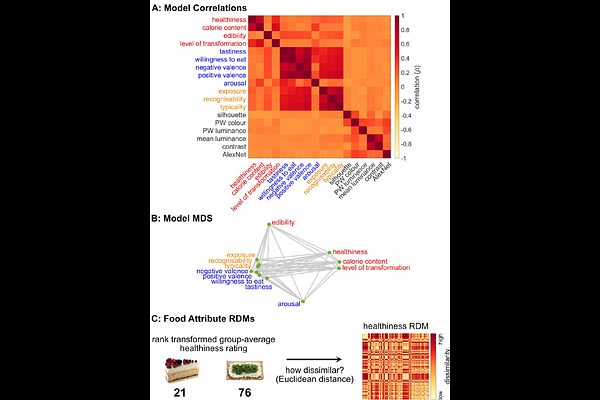Characterising the neural time-courses of food attribute representations

Characterising the neural time-courses of food attribute representations
Chae, V. J.; Grootswagers, T.; Bode, S.; Feuerriegel, D.
AbstractDietary decisions involve the consideration of multiple, often conflicting, food attributes that precede the computation of an overall value for a food. The differences in the speed at which attributes are processed play an important role; however, it is unknown whether different attributes are processed over distinct time windows. We mapped the neural time-courses of 12 choice-relevant food attributes. Participants (N = 110) viewed food images while we recorded brain activity using electroencephalography (EEG). A separate group of participants (N = 421) rated the same images on nutritive properties (healthiness, calorie content, edibility, and level of transformation), hedonic properties (tastiness, willingness to eat, negative and positive valence, and arousal), and familiarity (previous exposure, recognisability, and typicality). Using representational similarity analysis, we quantified differences in patterns of multivariate EEG signals across foods and assessed whether the structure of these differences was correlated with differences in attribute ratings. We observed similar correlation time-courses for many attributes. There was an early window of correlations (~200 ms from image onset), followed by sustained windows of correlation from ~400-650 ms. Using principal components analysis, we identified a set of broader constructs that accounted for variance in ratings across multiple attributes, and also correlated with the EEG data. Our results indicate that food attributes important for choice are represented rapidly and in parallel, over similar time windows. Furthermore, we reveal that broad dimensions underlying individual attributes are also represented in the neural activity with distinct time-courses, indicating a multilevel structure of food attribute representations.